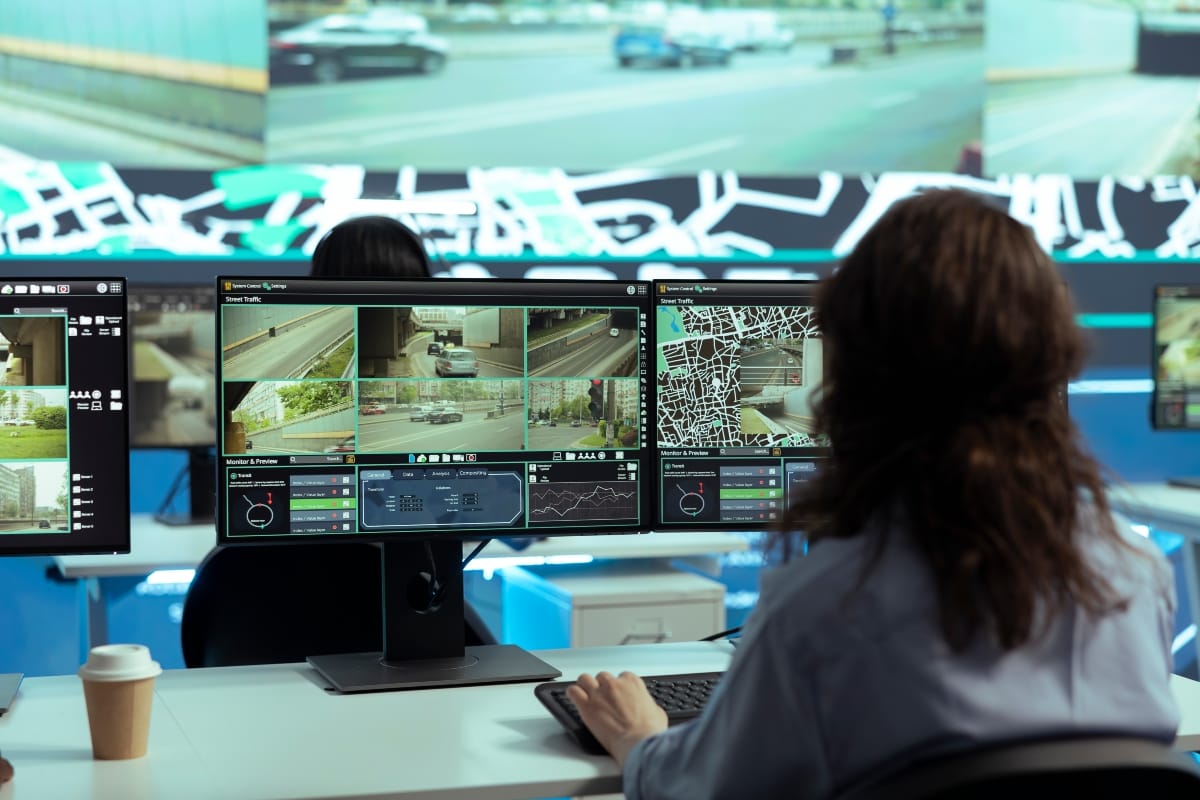In criminal investigations, video often acts as the silent witness, one that can support or challenge testimony, confirm timelines, or reveal overlooked details.
Surveillance footage, body-worn camera recordings, dashboard cams, and even smartphone clips have become central to modern evidence gathering. But raw video alone is rarely enough.
Without proper forensic video analysis, footage can be misleading, incomplete, or easily dismissed. That’s where the role of digital video forensics in criminal investigations becomes not just important, but often essential.
Video forensics turns unfiltered footage into usable evidence.
Whether it’s enhancing low-light video, authenticating a file’s integrity, or reconstructing the sequence of events, this discipline ensures that what’s captured on camera is fully understood and legally reliable.

More Than Just Playback: What Digital Video Forensics Actually Involves
There’s a common misconception that digital video forensics is about pressing play and watching closely.
In reality, it’s a highly technical process involving advanced tools, structured methodology, and a deep understanding of how video files are created, stored, and potentially altered.
A professional forensic video analysis may involve:
🔹Image enhancement: Adjusting lighting, contrast, or frame rate to clarify blurry or dark footage.
🔹Stabilization: Reducing camera shake to make motion clearer.
🔹Authentication: Verifying whether a video has been edited, compressed, or tampered with.
🔹Frame-by-frame analysis: Examining video at the smallest visual units to detect micro-movements, timestamps, or sequence inconsistencies.
🔹Redaction and masking: Protecting the identities of bystanders or minors without affecting evidentiary value.
🔹Metadata extraction: Pulling device info, timestamps, GPS coordinates, and other hidden data embedded in the video file.
🔹This level of analysis can reveal critical details, like the color of clothing, the presence of a weapon, or the direction someone was walking, especially when the original footage is compromised by poor quality or environmental conditions.
Common Types of Video Evidence in Criminal Cases
The range of video sources used in criminal investigations is broader than ever. Each comes with its own challenges and potential legal implications:
🔹Surveillance systems (CCTV): Often low-resolution and set to low frame rates, but strategically placed in key areas like stores, parking lots, and public streets.
🔹Body-worn cameras: Crucial in law enforcement accountability, but prone to motion blur and poor lighting.
🔹Dashboard cams: Useful in traffic stops, chases, or accident scenes.
🔹Smartphone videos: Ubiquitous and spontaneous, but sometimes edited, compressed, or lacking metadata.
🔹Doorbell and smart home cameras: Increasingly common in residential neighborhoods, often stored in cloud-based systems.
Each of these can become a pivotal piece of evidence or a point of contention.
That’s why the role of digital video forensics in criminal investigations often comes down to converting raw, sometimes messy footage into a version that’s clear, credible, and courtroom-ready.
Strengthening the Legal Process with Scientific Integrity
One of the greatest advantages of using a certified forensic video analyst is the adherence to scientific principles.
Courts want a chain of custody, verifiable methods, and results that can stand up under cross-examination.
Digital video forensics supports this by:
🔹Maintaining original file integrity – Never editing the original, always working from copies.
🔹Documenting every enhancement step – Creating a repeatable, transparent process.
🔹Avoiding visual distortion – Ensuring enhancements don’t misrepresent the original content.
🔹Providing expert testimony – Clearly explaining findings to judges, juries, and attorneys.
These steps are critical. A defense attorney may question the legitimacy of a timestamp.
A prosecutor may need to clarify whether a suspect’s actions were deliberate or incidental. In either case, video forensics offers objective, scientific clarity.
Real-World Applications That Make a Difference
To understand the value of this work, it helps to consider real-life use cases.
Imagine a robbery suspect claims they were miles away when a nearby convenience store was hit. Surveillance footage shows someone who matches their build, but the facial features are unclear.
A forensic analyst enhances the footage, isolates a frame, and compares the clothing pattern with a timestamped social media post showing the suspect in different clothes. Suddenly, the timeline shifts, and so does the narrative.
In another scenario, a police officer is accused of excessive force. Body cam footage is grainy and shaky.
By stabilizing the video, syncing audio, and analyzing frame sequences, a forensic expert provides a version that clarifies exactly when and how the interaction escalated.
In both cases, the expert isn’t acting as judge or jury. They’re delivering clarity, making sure the evidence is interpreted fairly and accurately.
This goes to show how important the role of video forensics in court is, ensuring evidence is accurate, admissible, and trusted in criminal investigations.
Avoiding the Pitfalls of DIY or Unqualified Video Work
One of the biggest threats to video evidence is mishandling. Well-meaning attorneys, investigators, or even IT departments sometimes attempt video enhancement using basic editing software. But this can result in altered files, lost metadata, or enhancements that don’t hold up in court.
Likewise, hiring someone without proper forensic credentials can backfire. If they can’t explain their methods or show a validated process, their findings can be thrown out, or worse, discredit the rest of your case.
Working with a qualified digital video forensics expert avoids these risks. It ensures that enhancements are based on science, not assumptions, and that every adjustment is done with courtroom admissibility in mind.
Video Evidence Is Powerful When It’s Handled Correctly
In the world of criminal investigations, video can speak volumes. But it doesn’t speak for itself, not without proper analysis. The footage might show the scene, but without context, clarity, and credibility, it may not carry the legal weight you need.
That’s why understanding the role of digital video forensics in criminal investigations is so important. It bridges the gap between raw footage and reliable evidence, turning a silent recording into a persuasive piece of the case.
At Stutchman Forensic Lab LLC, our team brings years of courtroom-tested experience in audio forensics, image forensics, forensic gunshot analysis, and more. We apply proven methods, cutting-edge tools, and deep legal knowledge to help attorneys and investigators present their cases with confidence.
If video plays a role in your case, contact us today! We’ll make sure it tells the right story, clearly, accurately, and admissibly.
